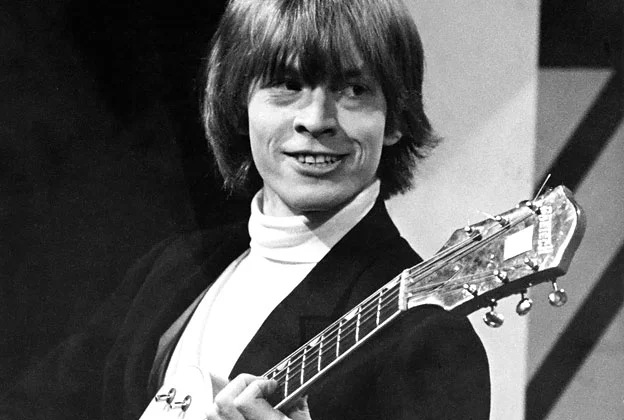Fans once shouted, “No Stones without Jones!” And in the early 1960s, that was true. Brian Jones was the spark that started The Rolling Stones. He named the band, brought them gigs, and wowed everyone with his talent. Jones could play almost anything—guitar, harmonica, sitar, flute, even autoharp. At first, he was the leader, the most exciting one of them all.
But by 1969, things had changed. Jones was no longer the driving force. Instead, he had become the weak link in the band he created.
The Early Days: Jones the Leader
When Mick Jagger and Keith Richards met Brian Jones in London in 1962, they were amazed. Jones was cool, confident, and talented. He showed Keith the “guitar weaving” style that made two guitars sound like more. Charlie Watts later said Jones was the one who really pushed the band forward in the beginning.
For a while, it worked. The Stones were young, wild, and living the rock and roll dream. But while Mick and Keith learned to balance the chaos, Brian struggled.
The Shift: Jagger and Richards Take Over
As Jagger and Richards began writing songs together, the power in the band shifted. Suddenly, Brian wasn’t the leader anymore—he was expected to follow. That change hurt him. On top of it, he partied harder than anyone else. He often missed rehearsals or showed up too messed up to play.
Personal problems didn’t help. His relationship with Anita Pallenberg turned abusive, and she eventually left him for Keith Richards. That betrayal deepened the cracks between Brian and the rest of the band.
Trouble in the Studio
By the late 1960s, Brian’s role in the studio was fading. During Beggars Banquet sessions, producer Jimmy Miller sometimes recorded without him. On Let It Bleed, he barely appeared at all—just some congas on “Midnight Rambler” and autoharp on “You Got the Silver.”
The truth was clear: Brian, once the band’s musical genius, had become an afterthought.
The Breaking Point
In 1969, things came to a head. The Stones were planning a U.S. tour, but Brian’s drug arrests made it almost impossible for him to get a visa. The band couldn’t risk it anymore.
On June 8, 1969, Mick, Keith, and Charlie visited Brian at his home. They told him he was out. The next day, he released a statement:
“I no longer see eye-to-eye with the others… I want to play my kind of music, which is no longer the Stones’ music.”
Just weeks later, 20-year-old Mick Taylor joined as the new guitarist.
The Tragic End
Less than a month after leaving the Stones, on July 3, 1969, Brian Jones was found dead in his swimming pool. The official cause was “death by misadventure,” but rumors and theories still surround what really happened.
Two days later, the Stones played a huge concert in Hyde Park. It became a tribute to Jones, with Mick Jagger reading a poem in his honor and thousands of butterflies released into the sky.
Legacy
Brian Jones will always be remembered as the restless, brilliant musician who gave The Rolling Stones their start. But he’s also a reminder of how fame and excess can burn out even the brightest flame.
The Stones went on to thrive without him, but for many fans, Brian was the original heart of the band—the first true Rolling Stone.

